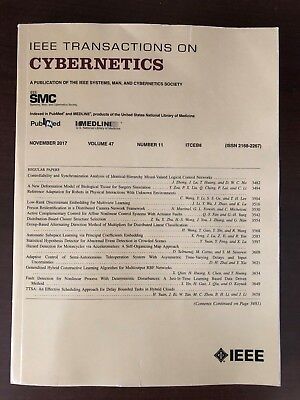Group Time-Varying Formation Tracking Control for Multiagent Systems Using Multiple Dynamic Edge-Event-Triggered Mechanisms.
IF 9.4
1区 计算机科学
Q1 AUTOMATION & CONTROL SYSTEMS
引用次数: 0
Abstract
This article addresses a new type of adaptive time-varying group formation tracking (TVGFT) problem for linear multiagent systems (MASs) with nonautonomous leaders. To fulfill complicated formation tasks, a TVGFT protocol is proposed, where the agents are decomposed into multiple subgroups and each subgroup can successfully track the corresponding leader. Additionally, novel multiple asynchronous dynamic edge-event-triggered mechanisms (DEETMs) are designed to further conserve communication resources and optimize network utilization by enabling the leader to send information intermittently and allowing each follower to transmit information asynchronously when the trigger mechanisms are satisfied. The DEETMs consider both interlayer and intergroup information interactions to improve communication efficiency. Different from the existing results, the proposed DEETMs are used for intergroup information exchange to enhance both the coordination of formation and information transparency. At last, the simulation experiment is offered to validate the designed protocol.基于多动态边缘事件触发机制的多智能体群体时变队形跟踪控制。
本文研究了一类具有非自治领导者的线性多智能体系统的自适应时变群体编队跟踪问题。为了完成复杂的编队任务,提出了一种TVGFT协议,该协议将agent分解为多个子组,每个子组都能成功跟踪相应的leader。此外,设计了新的多异步动态边缘事件触发机制(DEETMs),使领导者能够间歇性地发送信息,并允许每个follower在满足触发机制时异步发送信息,从而进一步节省通信资源并优化网络利用率。deetm同时考虑层间和组间的信息交互,以提高通信效率。与已有结果不同的是,本文提出的deetm用于群体间信息交换,既增强了信息的协调性,又增强了信息的透明度。最后,通过仿真实验验证了所设计协议的有效性。
本文章由计算机程序翻译,如有差异,请以英文原文为准。
求助全文
约1分钟内获得全文
求助全文
来源期刊

IEEE Transactions on Cybernetics
COMPUTER SCIENCE, ARTIFICIAL INTELLIGENCE-COMPUTER SCIENCE, CYBERNETICS
CiteScore
25.40
自引率
11.00%
发文量
1869
期刊介绍:
The scope of the IEEE Transactions on Cybernetics includes computational approaches to the field of cybernetics. Specifically, the transactions welcomes papers on communication and control across machines or machine, human, and organizations. The scope includes such areas as computational intelligence, computer vision, neural networks, genetic algorithms, machine learning, fuzzy systems, cognitive systems, decision making, and robotics, to the extent that they contribute to the theme of cybernetics or demonstrate an application of cybernetics principles.
 求助内容:
求助内容: 应助结果提醒方式:
应助结果提醒方式:


